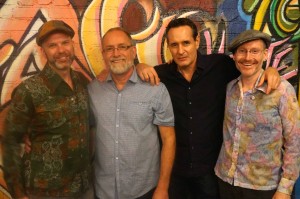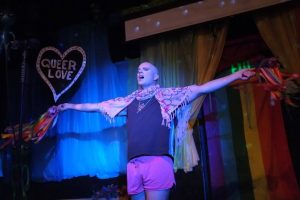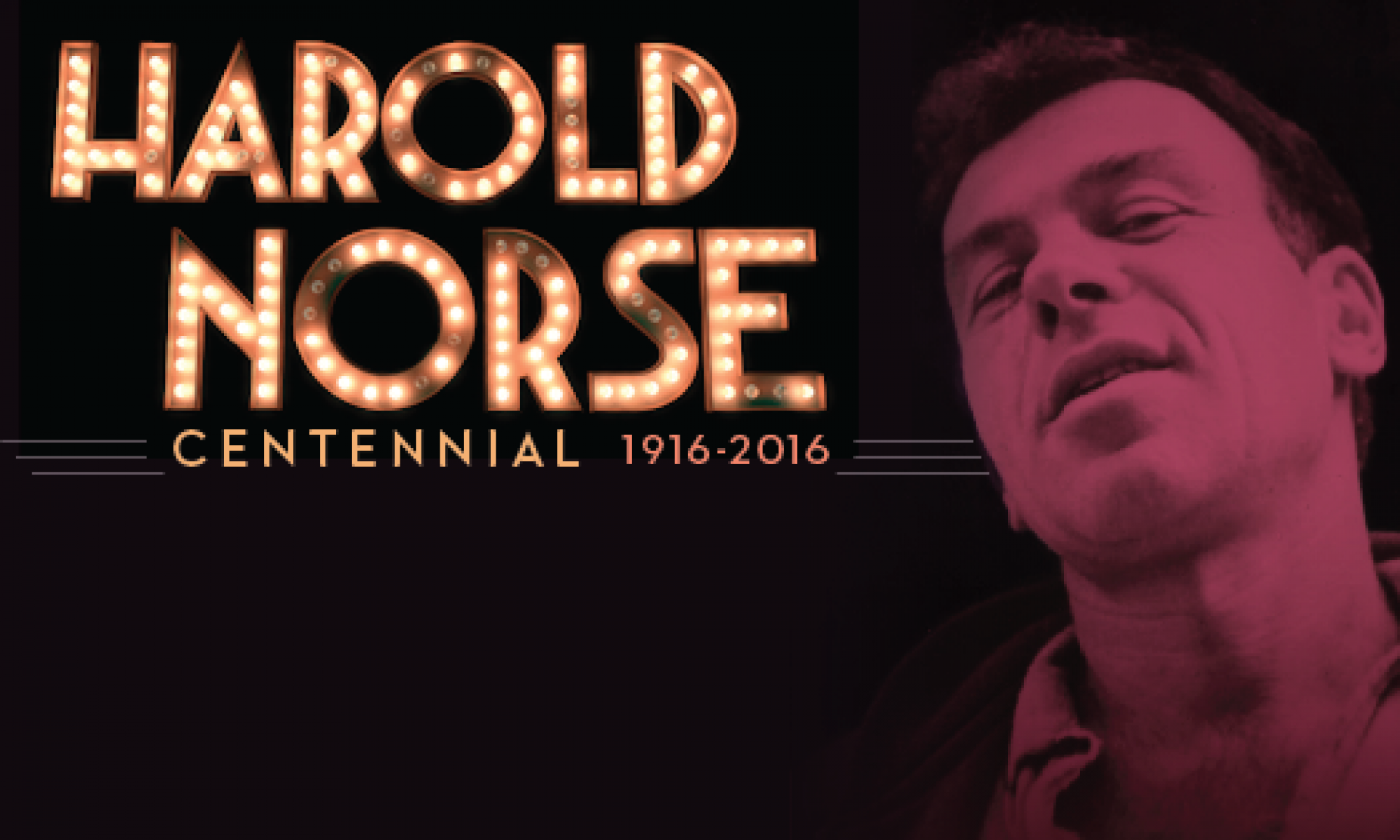
I first encountered the phenomenally talented Jason Jenn last summer in Los Angeles during my book tour for the selected poems of Harold Norse. Homo-centric is a monthly reading series in Echo Park curated by Hank Henderson. For the July event Hank had invited local artists to read Harold’s work. I was thrilled to have a chance to hear Harold’s poetry read by gay voices other than mine.
When I mentioned I was planning for Harold’s centennial the following summer, Jason immediately said he wanted to participate. I was surprised mainly because talented queer artists are invariably booked solid with their own projects. Yet Jason said he felt not only a connection to Harold’s work but a need to learn about and share Harold’s own queer history.
Overtime I learned more about Jason’s work on other gay poets especially his full-length performance on the poetry of James Broughton– a San Francisco poet and filmmaker who was a good friend of Harold’s. His art is also activism, exemplified by his ongoing Queer History Tours of West Hollywood.
Each of the three upcoming Harold Norse Centennial events will begin with a brief performance by Jason of Harold’s poetry. I can honestly say that Harold would be thrilled about Jason’s involvement. During the busy preparations for next week, Jason and I had a chance to chat over email.
What can those who attend the Norse Centennial events look forward to during your performance?
 Hopefully those familiar with Harold will see him in a compellingly fresh way and those unfamiliar will be turned on by how relevant, moving and provocative his poetry is. It’s my goal to create an experience that reflects the emotional truth of Harold’s work with an engaging visual component that supports his words. It will be a somewhat unique interpretation that honors the Beat generation as a vocal performance tradition mixed in with my own contemporary queer spirit. I like to believe that when I create these performances, Harold’s spirit is being entertained as well. I hope it encourages others to dive more into his work.
Hopefully those familiar with Harold will see him in a compellingly fresh way and those unfamiliar will be turned on by how relevant, moving and provocative his poetry is. It’s my goal to create an experience that reflects the emotional truth of Harold’s work with an engaging visual component that supports his words. It will be a somewhat unique interpretation that honors the Beat generation as a vocal performance tradition mixed in with my own contemporary queer spirit. I like to believe that when I create these performances, Harold’s spirit is being entertained as well. I hope it encourages others to dive more into his work.
You provided assistance and friendship to the elder gay artist and poet William Emboden who recently died. What did you gain from an intergenerational queer connection?
Volumes. Literally and figuratively. I’m really missing William right now; he was a great friend. The value of intergenerational queer connection is infinite and worthy of further attention. It’s how we pass along the life-force, the children of the mind, the queer spirit. William gave me insight into what he gained from his life experience; he was a bridge to other generations.
Through our discussions from typing up his handwritten poems, plays, and manuscripts, I learned so much about the queer cultural icons about whom he encountered, admired, and wrote. It has always been my intention to perform some of William’s poetry someday. It made him happy thinking about what I might come up with even though he knew he wouldn’t get to see it. Writing kept him going day by day through his challenging decline, but he carried himself with such grace and cheer up until the last time I saw him. That was another big lesson.
You’ve created performance pieces for a diverse range of gay authors from the Greek poet Cavafy to poet and filmmaker James Broughton who was a friend of Harold’s. How do you choose these artists? What have you learned from them?
It’s actually because of William and his partner Tony that I even got into the series of gay/queer poet performances in the first place. And oddly enough, in all cases, I never chose the artist — it happened rather serendipitously.
Tony invited me to create a short performance piece for a book release and gallery opening of photographs by Stathis Orphanos called My Cavafy. I was actually not familiar with Cavafy’s work, but once I started reading his poems, I felt a rapturous connection and my imagination lit up. I ended up creating a full-length one-act play with a few other performers by combining Cavafy’s poetry with other aspects of his life story.
Broughton’s centennial was timed with the documentary film Big Joy. Its producer/director Stephen Silha encouraged other artists to create art about Broughton. Again I was mostly unfamiliar with his work, but fell head over heels for it (literally – my legs were up the air during a recitation of one of his poems in my show “Ecstasy For Everyone” as befitting Broughton’s espousal of sexual freedom).
Each poet has encouraged me to continue my own poetry. In working over and over again with their poems, I discover both what works for me and what doesn’t about their individual style. They become my teachers and I certainly draw upon them in my writing subconsciously, whether I want to or not.
For some time you’ve collaborated with Harry Hay biographer Stuart Timmons on a Queer History Tour of West Hollywood. How has that changed your perception of the neighborhood?
Working with Stuart on the tour deepened my appreciation not only of West Hollywood, but how I look at queer history. It was author Mark Thompson who suggested I get to know Stuart and introduce him to some of the newer Los Angeles Radical Faeries. I guess I’m a repeat example of why intergenerational queer connection is influential!
 Stuart had written a trio of LGBTQ history walking tours of Los Angeles, but hadn’t finished the section on West Hollywood when he had a major stroke in 2008. When I found out the city was seeking artists to help create events for its 30th Anniversary, I immediately thought about working with Stuart to complete tour. Originally we intended it to be just an audio and written tour, but during a walk-wheel-through of his original draft the idea came to create a “live-action adventure”. I imagined different performers stationed around the city in some wild period costumes delivering the history. It was a bigger endeavor than either of us intended but ended up being so much fun that the city keeps asking us back to do it again.
Stuart had written a trio of LGBTQ history walking tours of Los Angeles, but hadn’t finished the section on West Hollywood when he had a major stroke in 2008. When I found out the city was seeking artists to help create events for its 30th Anniversary, I immediately thought about working with Stuart to complete tour. Originally we intended it to be just an audio and written tour, but during a walk-wheel-through of his original draft the idea came to create a “live-action adventure”. I imagined different performers stationed around the city in some wild period costumes delivering the history. It was a bigger endeavor than either of us intended but ended up being so much fun that the city keeps asking us back to do it again.
What place do you think queer rage and anger has in the current discussion about violence against the LGBTQ community?
 It’s an absolutely vital component for transformation. We need to really go there and share that rage in order to counteract and move beyond the horrors brought against us throughout history. But we can’t let it consume us. We have to stand up to, be strong, all while staying true to other aspects of our queerness like compassion, creativity, wisdom, vision, service, community – you name it, we contain multitudes. Anger has a valid, important place in the spectrum, but only in unison with the rest. You can be sure there will be some of the rage I feel right now about the world in the performance. It can’t be ignored and Harold brought that into his poetry.
It’s an absolutely vital component for transformation. We need to really go there and share that rage in order to counteract and move beyond the horrors brought against us throughout history. But we can’t let it consume us. We have to stand up to, be strong, all while staying true to other aspects of our queerness like compassion, creativity, wisdom, vision, service, community – you name it, we contain multitudes. Anger has a valid, important place in the spectrum, but only in unison with the rest. You can be sure there will be some of the rage I feel right now about the world in the performance. It can’t be ignored and Harold brought that into his poetry.
Who are some of the LGBTQ artists that have inspired you and your creativity?
My dear friend Robert Patrick Playwright is an enormous inspiration to many of us. He and I both have a knack for creating our own a cappella songs since neither of us can play an instrument. He believed most of his life he couldn’t sing, but he’s charming the hell out of everyone singing for us and sharing his incredible wit and command of melody.
Ian MacKinnon is a mega-talent component of a fierce queer renaissance who shares queer history lessons in a wild and sexy way unlike anyone else. You can find the greatest inspiration from any number of the regulars who perform at the monthly Planet Queer event Ian co-produces with Travis Wood. I know I’m biased, but there are easily a dozen or so who deserve to be given a heap of funds to just keep doing what they do. The list seriously goes on and on, especially from artist’s like Harold who are no longer with us, but left us a lasting legacy to tap into and rediscover.
Here’s a poem that Jason’s friend William Emboden wrote about Harold Norse, San Francisco and Poetry:
A New Found Freedom (1960)
A week ago Jason loaned me
The Selected Poems of Harold Norse
He knew how I would respond
I feel totally at one with this poet
I lived his San Francisco experiences ten years earlier
Nineteen sixty was my time in San Francisco
City Lights Books was my alternative home
I listened to the poets that Norse knew personally
I never had the nerve to approach them
Other than Bukowski whom I did not take to
Ginsberg was a wonderful poet and orator
Poems came spilling out of him on those dark San Francisco nights
City Lights was extraordinary among bookstores
I walked to its beacon of lights almost nightly
Exhausted by hard physical work I was resurrected
It was my real coming out to the world
Ginsberg and Ferlinghetti were our gay saints
In the sixties San Francisco poets were everywhere
But all congregated as worshipers at City Lights
A basement with hard benches was a hive of bees being poets
The excitement of words filled the air
Walls of books voices booming others hushed
There we worshiped by listening
Our communion in coffee and after coffee houses
The Trieste was a special bakery-coffee house
North beach was Italianate and vital
Lucca’s restaurant with its great oysters in the shell with garlic
Cheap Chinese markets with exotic fruits and vegetables
I as a student lived on the kindness of strangers
And those new friends among the Sainted poets
How alive was my life then
Gay and twenty five in bookstores
Gay and finishing a night in a bar
Waking up in the bed of a friend of the night before
Books narrations and poems
Sex bars and a newly found freedom
Life as it should and did then exist
